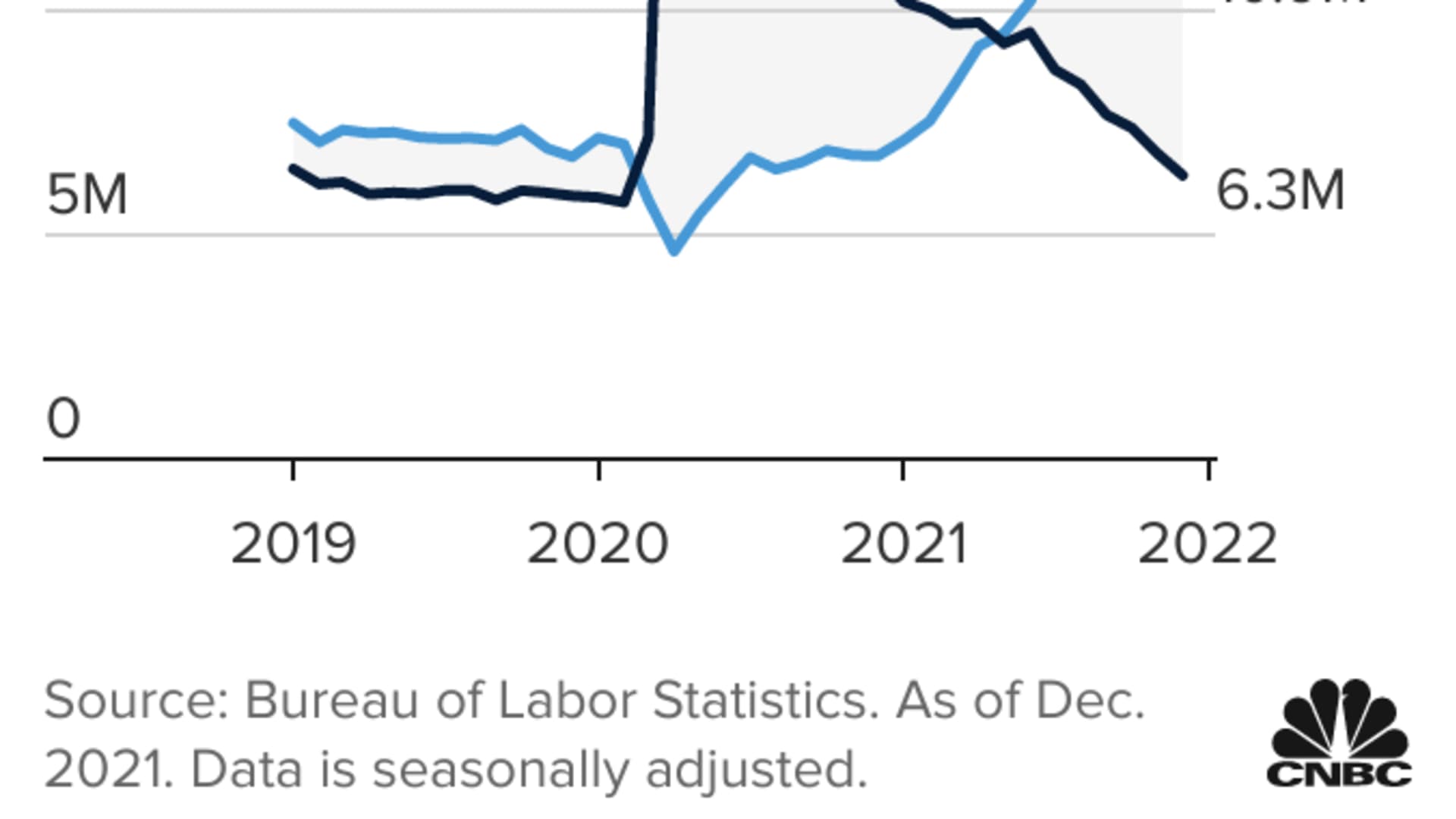
- Job openings totaled nearly 11 million in December, more than 4.6 million above the total unemployment level, according to the Labor Department.
- The so-called quits level declined, signaling a slowdown in a trend known as the Great Resignation.
- Elsewhere, the ISM Manufacturing Index showed a big gain in prices, reflecting ongoing inflation pressures.
Job openings totaled nearly 11 million in December while the Great Resignation cooled off, according to Labor Department data Tuesday.
Reflecting a tightening labor market, vacancies rose to 10.92 million, well above the FactSet estimate for 10.28 million and an increase of 1.4% from November. The rate of job openings as a share of the labor force was unchanged at 6.8%.
The "quits" level, which had soared to record highs in recent months amid a confluence of factors, slowed to 4.34 million, a decrease of 3.6%, while the quits rate edged down 0.1 percentage point to 2.9%.
Get top local stories in Philly delivered to you every morning. Sign up for NBC Philadelphia's News Headlines newsletter.
At the same time, layoffs and discharges tumbled to 1.17 million, a decline of 10.7% from a month ago and a tumble of nearly 36% from the same month in 2020 to easily the lowest level on record.
The discharges level is "a sign that workers now have more job security than ever before," said ZipRecruiter lead economist Sinem Buber. "Given the trouble businesses are having in finding and attracting new hires, employers are hanging onto the workers they've got."
Money Report
The JOLTS report is considered a particularly important gauge when measuring labor market slack.
December's numbers further pointed to how close the economy is to full employment. There were 4.6 million more vacancies than workers considered unemployed for the month.

January, however, is expected to be a tricky month for job data as the Covid omicron variant sent millions of workers to the sidelines during the month.
"[Tuesday's] report suggests that the latest wave of the pandemic brought on by the omicron variant didn't fully hit the labor market in December," said Nick Bunker, director of research for Indeed Hiring Lab.
"Demand for workers, as measured by job openings, remained robust and layoffs hit a new all-time low. But while the data suggest no major impact in December, the outlook for January is less optimistic," Bunker said.
In other economic news Tuesday, the ISM Manufacturing survey for January came in at 57.6%, a decline of 1.2 percentage points from December but slightly ahead of the 57.4% Dow Jones estimate. The number represents the share of businesses reporting expansion for the month.
Federal Reserve officials are watching the latest data closely as they prepare to embark on their first tightening cycle since 2018.
Policymakers say they feel the economy is close to fulfilling the Fed's mandate of full employment, while inflation remains higher than its 2% benchmark.
Indeed, the ISM index reflected inflation pressures in the pipeline, as the Prices Index in January hit 76.1%, up 7.9 percentage points from December.
The numbers come at a time when other inflation gauges are running at their highest levels in nearly 40 years.
In response to the inflationary pressures, markets are expecting the Fed to raise benchmark short-term interest rates five times this year, which would amount to 1.25 percentage points. Several central bank officials on Monday said that the timing is appropriate for policy tightening, and markets are expecting the first quarter-percentage point increase to come in March.






